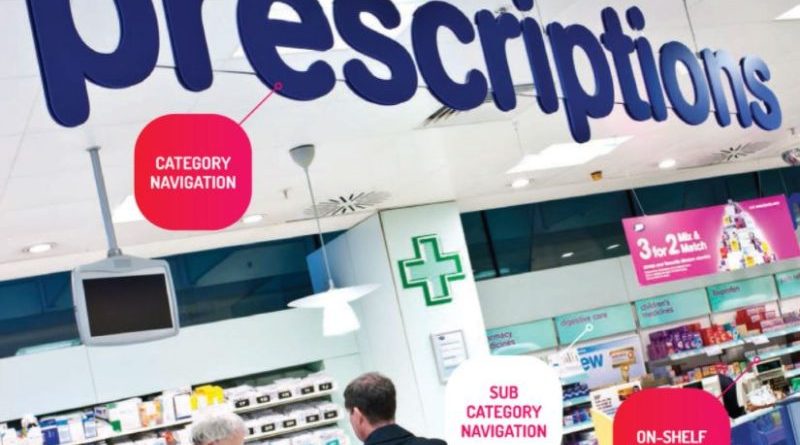Sales Agent’s View: Visualise your customer’s in store journey, does it flow?
WORDS: John Styles, director at cycling industry consultancy Cyconomist.com
What’s the single greatest reason driving consumer behaviour when they choose to shop on the internet instead of in your store? Could it be price? Everyone loves a bargain, right? Or maybe it’s choice, I mean what’s better than everything all under one roof? Next day delivery, can’t get it much faster that? Convenience of shopping in their own home? Self-service?
Well, all those things are important and I’m sure there are lots of studies assessing which of these drivers is more powerful (I’ve read some of them). But I have a lurking suspicion none of them are the top reason. I suspect the biggest reason people shop on the Internet is the power of visual communication.
Why? Simply, people shop with their eyes. Internet shopping is most often a wholly visual experience (unless you watch a video). Why is this important?
Firstly, because your laptop, tablet or smartphone is something you read/observe with your eyes – often in an uninterrupted/focused and insular way. Visual images penetrate the emotional decision-making of the brain quicker and are remembered more than the spoken word – 87% of what we remember is anchored to a visual memory vs 10% for auditory information.
Secondly, because when you shop online, you don’t have to talk to anyone or listen to anyone. Listening to people and interpreting the spoken word places higher cognitive load on the brain as we have to interpret the words and formulate a response. Consumers seem to find that harder and harder work nowadays.
Thirdly, because visual communication is so much more powerful than the spoken word. Which is one reason why tweets out-do speeches in today’s political climate (they’re still words, but they use a different sensory channel).
This is not a new thing in terms of human behaviour, consider the 
following phrases: Show, don’t tell; Seeing is believing; A feast for the eyes; A picture tells 1,000 words; In one ear and out the other.
Today’s visual communication tools are new to us, mostly notably the smartphone. Ever noticed how much more frequently you check Facebook or Twitter if your smartphone is to hand instead of your tablet or laptop?
As a society and as individuals we are talking less and less – even as we communicate more and more. But the local bike shop still carries on largely in the tradition of the spoken word. In my previous article, ‘Back to Front’, I suggested that you position the till at the front of the store so you can offer people an immediate and friendly greeting. A paradox? No, by getting that ‘out of the way’ they are free to get on with self-serving or ask for your (verbal) assistance. If you wander out from the back of the store and meet them halfway up the shop floor you have taken away that choice.
Of course people want to talk at times and often value the advice, banter and chat that comes with a visit to the local bike shop. But not all of the people. And not all of the time. While some stores are quite rightly proud of the service and advice they give, I always feel a note of caution when I hear “we like to serve everybody”.
What I also observe is that too many bike shops set out their stall so that customers can’t really see what they are looking for – or at the very least find it difficult. Remember, you understand bike products, and you put them there, and you see them every day. So what you find easy and obvious is not what the customers find easy and obvious. All too often I’ve stood in a store when a consumer enters and says to the staff “do you sell pumps?” – while standing right next to the pumps.
See the table below and compare what people experience on the Internet or in a ‘corporate’ environment (they too are masters of visual communication as they don’t want to serve anyone).

As I’ve said in previous articles, I used to work with corporates like W H Smith and I’m not suggesting for a minute you want to be like them. But we can learn from their success. So, if you want to compete with the internet’s top driver – visual communication – here are three things you might want to look into:
1) Help people see your product – clean/hard surface flooring, good lighting, wide aisles.
2) Help people navigate your product – department headers (bikes/ service/clothing) and sub category headers (locks/lights/pumps).
3) Help people find your products – merchandise vertically in logical groups with clear separation.
I have visited three IBD stores (out of 600) who do this really well. I took pictures. I’m not including them here because they made the effort to create their own visual communication system and signage and sharing it would be unfair. However, we all have a local Supermarket, WH Smith or Boots. Take a step outside your store and go watch what people do. Observe yourself as a shopper too. How often do you need to check those signs?
Here’s the good news. These are all factors that are under your control and in a way that other factors which drive internet shopping are not. I’m not suggesting for a moment that you can ‘win’ the battle for customers spend against internet shopping. But you can win more often, with more customers. That might be enough to make a difference to your profits.
Think your store could do with a little redirection or staff a fresh perspective? You can contact John here, or visit cyconomist.com



